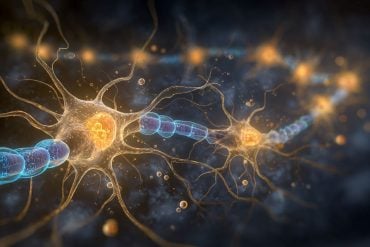Summary: Researchers created a revolutionary system that can non-invasively convert silent thoughts into text, offering new communication possibilities for people with speech impairments due to illnesses or injuries.
The technology uses a wearable EEG cap to record brain activity and an AI model named DeWave to decode these signals into language. This portable system surpasses previous methods that required invasive surgery or cumbersome MRI scanning, achieving state-of-the-art EEG translation performance.
It shows promise in enhancing human-machine interactions and in aiding those who cannot speak, with potential applications in controlling devices like bionic arms or robots.
Key Facts:
- The system records brain activity through an EEG cap and uses the AI model DeWave to translate EEG signals into words and sentences.
- The technology has demonstrated around 40% translation accuracy on BLEU-1 scale and aims to reach the performance level of traditional language translation programs.
- It offers a more adaptable and less invasive alternative to previous technologies, having been tested on 29 participants with diverse EEG patterns.
Source: University of Technology Sydney
In a world-first, researchers from the GrapheneX-UTS Human-centric Artificial Intelligence Centre at the University of Technology Sydney (UTS) have developed a portable, non-invasive system that can decode silent thoughts and turn them into text.
The technology could aid communication for people who are unable to speak due to illness or injury, including stroke or paralysis. It could also enable seamless communication between humans and machines, such as the operation of a bionic arm or robot.

The study has been selected as the spotlight paper at the NeurIPS conference, a top-tier annual meeting that showcases world-leading research on artificial intelligence and machine learning, held in New Orleans on 12 December 2023.
The research was led by Distinguished Professor CT Lin, Director of the GrapheneX-UTS HAI Centre, together with first author Yiqun Duan and fellow PhD candidate Jinzhou Zhou from the UTS Faculty of Engineering and IT.
In the study participants silently read passages of text while wearing a cap that recorded electrical brain activity through their scalp using an electroencephalogram (EEG). A demonstration of the technology can be seen in the video below.
The EEG wave is segmented into distinct units that capture specific characteristics and patterns from the human brain. This is done by an AI model called DeWave developed by the researchers. DeWave translates EEG signals into words and sentences by learning from large quantities of EEG data.
“This research represents a pioneering effort in translating raw EEG waves directly into language, marking a significant breakthrough in the field,” said Distinguished Professor Lin.
“It is the first to incorporate discrete encoding techniques in the brain-to-text translation process, introducing an innovative approach to neural decoding. The integration with large language models is also opening new frontiers in neuroscience and AI,” he said.
Previous technology to translate brain signals to language has either required surgery to implant electrodes in the brain, such as Elon Musk’s Neuralink, or scanning in an MRI machine, which is large, expensive, and difficult to use in daily life.
These methods also struggle to transform brain signals into word level segments without additional aids such as eye-tracking, which restrict the practical application of these systems. The new technology is able to be used either with or without eye-tracking.
The UTS research was carried out with 29 participants. This means it is likely to be more robust and adaptable than previous decoding technology that has only been tested on one or two individuals, because EEG waves differ between individuals.
The use of EEG signals received through a cap, rather than from electrodes implanted in the brain, means that the signal is noisier. In terms of EEG translation however, the study reported state-of the art performance, surpassing previous benchmarks.
“The model is more adept at matching verbs than nouns. However, when it comes to nouns, we saw a tendency towards synonymous pairs rather than precise translations, such as ‘the man’ instead of ‘the author’,” said Duan.
“We think this is because when the brain processes these words, semantically similar words might produce similar brain wave patterns. Despite the challenges, our model yields meaningful results, aligning keywords and forming similar sentence structures,” he said.
The translation accuracy score is currently around 40% on BLEU-1. The BLEU score is a number between zero and one that measures the similarity of the machine-translated text to a set of high-quality reference translations. The researchers hope to see this improve to a level that is comparable to traditional language translation or speech recognition programs, which is closer to 90%.
The research follows on from previous brain-computer interface technology developed by UTS in association with the Australian Defence Force that uses brainwaves to command a quadruped robot, which is demonstrated in the ADF video above.
About this AI and neurotech research news
Author: Leilah Schubert
Source: University of Technology Sydney
Contact: Leilah Schubert – University of Technology Sydney
Image: The image is credited to Neuroscience News
Original Research: The findings will be presented at the Neural Information Processing Systems meeting






